Every desktop computer or laptop holds at least one processor, commonly known as a CPU or the Central Processing Unit. This processor is one of the most important components in your system as it determines your system’s speed and the kind of software it can run. The CPU is the main chip designed to receive and process instructions and return a result for an action/task. This little chip can process a trillion or more instructions in just a second.
If you have a device running on Windows 11/10, the processor will play a crucial role in how fast and smooth the experience will be. Processors come in a variety of types and many manufacturers make them. In most cases, it would either be from AMD or Intel – sometimes Qualcomm with their ARM processors.
On Windows 11/10, you can check your device specifications for almost all your hardware in many different ways. This includes Basic Input/Output System or Unified Extensible Firmware Interface (BIOS or UEFI) firmware, model number, processor, memory, drive, graphics, OS version, and updates. However, depending on our topic in focus i.e. Processors today we walk you through the steps to find out the processor brand and model installed in your laptop running Windows 11/10.
How to find out Processor Brand & Model on Windows computer
There are multiple ways of finding out which processor you have on your Windows 11/10 laptop. We will list down the easiest methods here:
- Find out processor details using Settings
- Find out processor details using Task Manager
- Find out processor details using Control Panel
Let’s look at each of these methods in more detail.
1] Find out processor details using Settings
To determine the processor installed on your computer, follow these steps:
1] From the ‘Start Menu’ go to ‘Settings’
2] Hit on ‘System’.
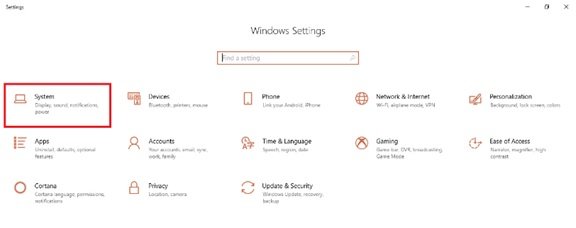
3] On the Left-Panel, scroll down and hit ‘About’
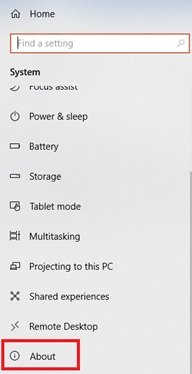
4] Now under the ‘Device specifications’ section, confirm the processor brand and model.
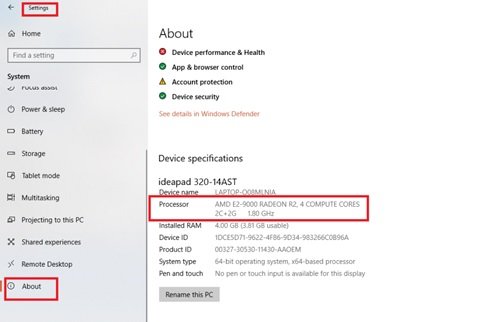
Once you’ve followed these steps, you will get an idea of whether your device is using a processor from Intel, AMD, or Qualcomm.
Read: What are the main components of a Computer system?
2] Find out processor details using Task Manager
If you find Task Manager more accessible and convenient to use, you can check your Processor details using these steps:
1] From the ‘Start Menu’ search for ‘Task Manager’ and click the top result to go to the app. Or use a shortcut by pressing ‘Alt+Ctrl+Del’.
2] Now click the ‘Performance’ tab.
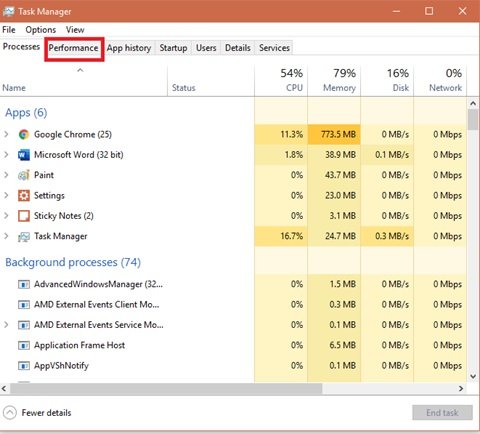
3] Click on ‘CPU’ to view your processor details.
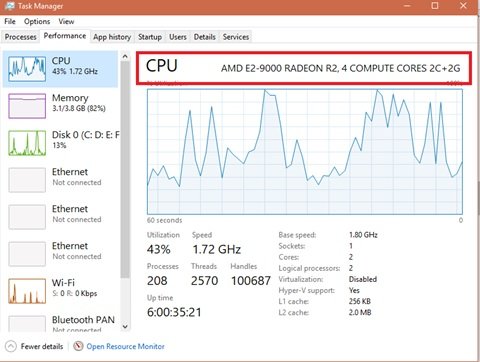
You can confirm your processor information on the top-right corner of the Task Manager window. In this example, the processor brand is from ‘AMD’ and the model is ‘E2 9000’.
Read: How to find free Memory Slots in Windows
3] Find out processor details using Control Panel
The control panel can also give you information on your processor’s brand and model. Follow the below steps:
1] From the ‘Start Menu’ search for ‘Control Panel’ and click the top result to go to the app.
2] Now hit ‘System and Security’
3] Go to ‘System’
Your laptop’s processor model and speed are displayed to the right under the ‘System’ heading.
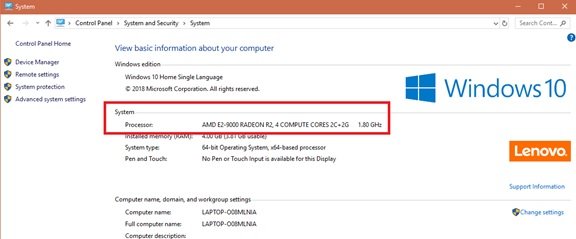
We hope by now you will very well know the details of the processor installed on your system.
Although this Windows guide focuses mainly on laptops, you can use the same steps to determine the processor details on any computer system running on the Windows 11/10 operating system.
Read: How to check Intel processor generation in Windows
How do I identify my Windows hardware?
The physical parts in a computer, such as CPU, RAM, graphics card, etc., are known as hardware. If you want to get your hardware information, you can use Windows built-in tool System Information. To launch this too, click on Windows Search and type system information, then click on the System Information from the search results.
Read next: Where to find computer hardware specs in Windows.
How do I know if my laptop is i5 or i7?
i5 and i7 both are Intel processors. If you do not know which Intel processor is installed on your system, you can check this in several different ways. The easiest way is via Windows 11/10 Settings. Go to the About page in Windows 11/10 Settings to view your CPU information. Other ways to check CPU generation and other information include Command Prompt, Task Manager, and free software.
These tools can provide the provides hardware configuration information about your computer easily:
Sandra Lite | Speccy | MiTeC System Information X | BGInfo | CPU-Z | HiBit System Information | Hardware Identify.
Leave a Reply